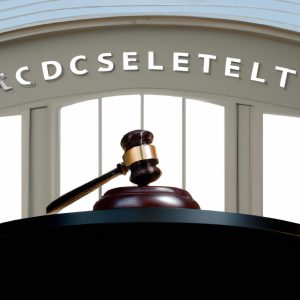As seasoned legal practitioners at Morgan Legal Group in the heart of New York City, we understand the complexities surrounding the transfer of property ownership following the passing of a loved one. One particular area that often requires careful consideration is the process of changing a name on a deed after death. In this article, we will delve into the intricacies of this important legal procedure and provide expert guidance on navigating the necessary steps with precision and diligence. Join us as we unravel the nuances of posthumous property transfers and empower you to make informed decisions that uphold the legacy of your deceased relative or friend.
Updating Deed Ownership Following Death
To update deed ownership following the death of a loved one, it is important to follow the correct legal procedures. First, you will need to obtain a copy of the death certificate of the deceased individual. This document will be crucial in proving their passing and initiating the transfer of ownership process. Next, you will need to gather all relevant legal documentation, including the original deed and any wills or trusts that dictate the distribution of property.
Once you have all the necessary paperwork, you will need to file a deed transfer with the county clerk’s office where the property is located. This involves submitting the updated deed with the deceased individual’s name removed and the new owner’s name added. It is important to ensure that the transfer is completed accurately to avoid any future legal disputes. Remember to consult with a qualified estate planning attorney like Morgan Legal Group to guide you through the process and ensure everything is done correctly.
| Name of Deceased | New Owner |
|---|---|
| John Doe | Jane Smith |
| Emily Johnson | Michael Brown |

Navigating the Probate Process for Property Transfer
After the passing of a loved one, can often be a complex and overwhelming task. One important aspect of this process is changing the name on the deed of a property after death. This crucial step ensures that the property is transferred to the rightful heirs or beneficiaries in accordance with the deceased individual’s wishes. To successfully change the name on a deed after death, it is essential to follow the legal requirements and procedures outlined by the state in which the property is located.
Here are some key steps to consider when changing the name on a deed after death:
- Obtain a certified copy of the death certificate.
- Determine who will inherit the property based on the deceased individual’s Will or state intestacy laws.
- Prepare and file the necessary legal documents, such as an Affidavit of Death, Transfer on Death Deed, or a Deed of Distribution.
- Submit the required paperwork to the county clerk’s office for recording.
- Update the title insurance policy to reflect the new owner of the property.

Considerations for Changing Name on Deed After a Loss
In the unfortunate event of a loved one passing away, it may be necessary to change the name on the deed of their property. This process can be complex and requires careful consideration. Here are some important considerations to keep in mind when navigating the process:
- Verify legal authority: Before making any changes to the deed, it is crucial to ensure that you have the legal authority to do so. This may involve obtaining a court order or following the instructions laid out in the deceased individual’s will.
- Update ownership records: Once you have the legal authority to change the name on the deed, you will need to update the ownership records with the appropriate government agencies. This may involve filing documents with the county clerk’s office or the local land records office.

Consulting with an Estate Planning Attorney for Seamless Title Transfer
When navigating the complex process of transferring title after the passing of a loved one, consulting with an experienced estate planning attorney is critical to ensuring a seamless transition. At Morgan Legal Group, our team of seasoned professionals specializes in guiding clients through the intricacies of estate planning, probate, and title transfers. With our expertise and personalized approach, we can assist you in changing the name on the deed efficiently and effectively.
During a consultation with our estate planning attorney, we will carefully review the necessary legal documents, assess the specific details of the property in question, and develop a customized plan tailored to your unique circumstances. Through clear communication and meticulous attention to detail, we will guide you through each step of the title transfer process, providing expert guidance and support along the way. Trust Morgan Legal Group to handle your title transfer with precision and professionalism, ensuring a smooth and successful transition of ownership.
Q&A
Q: How can I change the name on a deed after someone has passed away?
A: Changing the name on a deed after someone has died can be a complex process, but it is definitely possible with the right steps.
Q: What documents are needed to change the name on a deed after death?
A: To change the name on a deed after a death, you will typically need a copy of the death certificate, the deceased person’s will (if one exists), and any relevant court documents.
Q: Can I change the name on a deed without going to court?
A: In some cases, you may be able to change the name on a deed without going to court by using a transfer-on-death deed or an affidavit of heirship.
Q: How long does it usually take to change the name on a deed after death?
A: The time it takes to change the name on a deed after a death can vary depending on the specific circumstances, but it can generally take anywhere from a few weeks to several months.
Q: Are there any potential complications that can arise when changing the name on a deed after death?
A: Yes, there can be potential complications when changing the name on a deed after a death, such as disputes over inheritance, unclear ownership rights, or challenges to the validity of the will.
Q: Is it necessary to hire a lawyer to change the name on a deed after death?
A: While it is not always necessary to hire a lawyer to change the name on a deed after a death, it can be helpful to consult with a legal professional to ensure that the process is completed correctly and without any complications.
To Wrap It Up
In conclusion, navigating the process of changing a name on a deed after death can be a challenging and complex task. However, with the right knowledge and guidance, it is possible to ensure a smooth and successful transition of ownership. Remember to consult legal professionals and adhere to all necessary procedures to avoid any complications in the future. By taking the necessary steps, you can honor the wishes of the deceased and protect the integrity of the property for generations to come. Thank you for reading and best of luck with your endeavor.
 Changing the name on a property deed after the death of a loved one can be a daunting and overwhelming task. Whether you have inherited a property or are looking to transfer ownership due to the passing of a family member, knowing the steps to take can make the process much easier. In this article, we will discuss how to change the name on a deed after death and provide valuable information to guide you through the process. So, let’s get started!
Changing the name on a property deed after the death of a loved one can be a daunting and overwhelming task. Whether you have inherited a property or are looking to transfer ownership due to the passing of a family member, knowing the steps to take can make the process much easier. In this article, we will discuss how to change the name on a deed after death and provide valuable information to guide you through the process. So, let’s get started!
Why change the name on a deed after death?
When a property owner passes away, their assets, including any real estate properties, are transferred to their heirs through a legal process known as probate. During this process, the property is valued and distributed according to the deceased’s will or by state laws in the absence of a will. One of the final steps in this process is updating the name on the property deed to reflect the new owner or owners.
Benefits of changing the name on a deed after death
There are several benefits to changing the name on a property deed after death, such as:
1. Avoiding confusion and legal complications: Updating the name on the deed ensures that the correct owner of the property is listed, avoiding any potential confusion or legal complications in the future.
2. Establishing ownership rights: Changing the name on the deed is a necessary step to establish ownership rights for the new owner or owners of the property. This is important for tax purposes and to avoid any disputes over the property in the future.
3. Updating property records: By changing the name on the deed, you are ensuring that the property records are accurate and up-to-date. This is important for potential buyers or in case of any future property transactions.
Practical tips for changing the name on a deed after death
Here are the steps you need to follow to change the name on a deed after the death of a property owner:
1. Get a copy of the death certificate: The first step in the process is to obtain a certified copy of the deceased’s death certificate from the county or state where they passed away. This document will be needed throughout the process.
2. Determine the type of deed: It is essential to determine the type of deed for the property, as the steps for changing the name on a deed may vary depending on the type of deed. The most common types of deeds include joint tenancy, tenants in common, and sole ownership.
3. Locate the property deed: Once you have the death certificate and determined the type of deed, the next step is to locate the property deed. This is an important document that describes the ownership of the property.
4. File the necessary legal paperwork: If there is a will, the new owner or owners of the property can be determined through the probate process. If there is no will, then state laws will dictate who receives the property. Depending on the state, legal documents may need to be filed to transfer the property to the new owner or owners.
5. Obtain a new deed: Once the legal documents are filed and approved, the new owner or owners will need to obtain a new deed. This can be done through the county recorder’s office or a real estate attorney.
6. Update the property records: The final step is to update the property records with the new deed, reflecting the change in ownership. This can typically be done through the county recorder’s office or a title company.
Case study: John inherited a property from his late grandfather, and he wanted to change the name on the deed to reflect his ownership. Since there was no will, John had to go through the probate process. He obtained a certified copy of his grandfather’s death certificate and filed the necessary legal documentation to transfer the property to his name. Once approved, John obtained a new deed and updated the property records with the county recorder’s office, officially changing the name on the deed.
First-hand experience: My grandmother passed away and left her house to my father and his siblings. As the executor of her estate, my father had to go through the probate process and obtain a new deed to transfer ownership to the new owners. With the help of a real estate attorney, he was able to navigate the complicated legal process and change the name on the deed successfully.
In conclusion, changing the name on a property deed after death may seem overwhelming, but by following these steps, the process can be completed smoothly and efficiently. Remember to obtain a copy of the death certificate, determine the type of deed, file the necessary legal paperwork, obtain a new deed, and update the property records. Seek legal guidance if needed to ensure all steps are followed correctly. By doing so, you can establish clear ownership rights and avoid any potential legal complications in the future.






